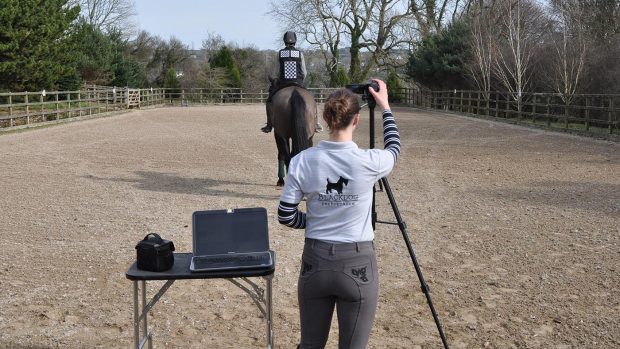View horses for sale
More articles on buying horses
Q: My friend recently bought a new horse, and had gait screening done to assess soundness. Can you tell me what this involves, and whether it could benefit my horse?
KC
The screening you refer to is known as equine performance analysis and is used to assess and maintain equine soundness.
Consultant farrier Haydn Price DipWCF developed the video-based system in 2004 to quantify data such as stride length, body symmetry and soundness for the British Olympic horses in Athens.
“Horses are filmed from all angles in walk and trot, on a hard, flat surface with joint centres highlighted,” explains Russell Guire of Centaur Biomechanics, who is the British Equestrian Federation (BEF) Equinalysis technician, and works with the World Class Start and Performance riders and their horses.
“We then collate what’s called ‘kinematic data’, which is downloaded on to a CD or DVD,” he explains.
“The screening can be used to help identify the cause of training problems, such as a difficulty in performing lateral work on a certain rein due to asymmetry or conformation issues.
“Although the technology began at the top levels of competition, these ‘video evidence’ techniques are also now accessible to ‘normal’ horse owners.”
The technology is being used at Bushy Equine Vets in Gloucestershire by Ian Camm MRCVS.
“Health and performance screening can potentially extend a horse’s competitive life by establishing a profile of movement and soundness,” explains Ian.
“The resulting ‘baseline’ of facts, such as the alignment of the joints, can be useful during the training process, and I believe has great potential in the field of assessment.
“The technology can be used to clarify any lameness or biomechanical challenges picked up at a horse’s five-stage vetting, and evaluate aspects such as stride length, breakover distance and carpal, tarsal or fetlock flexion.”
It can also be used for rider assessment; horse and rider are filmed from all angles and an on-site projector plays the footage back in slow motion. The software identifies the rider’s body measurements, such as posture, body alignment, and hip and knee angles.
Useful for physiotherapy and veterinary work, this system also provides a way for using farriery to promote athletic performance, according to Haydn Price.
“Farriers can take into account the needs of the limb, if required, instead of just shoeing the foot,” he says.
“As well as fitting a shoe to accommodate the horse’s movement, shoeing should take into account the amount of dynamic loading on a limb, which is directly related to the effectiveness of the joints, and can affect tendon and ligament health.”
Regular screening usually takes place annually or biannually at a cost of up to £250 per session. The technology can be utilised by all para-professionals and professionals, including equine vets.
Information
Visit www.equinalysis.co.uk for details about accredited clinicians who carry out the service, or Tel: 01291 671351.
This Q&A was first published in Horse & Hound (31 May, ’07)
View horses for sale near you
Looking for more articles on buying horses?



